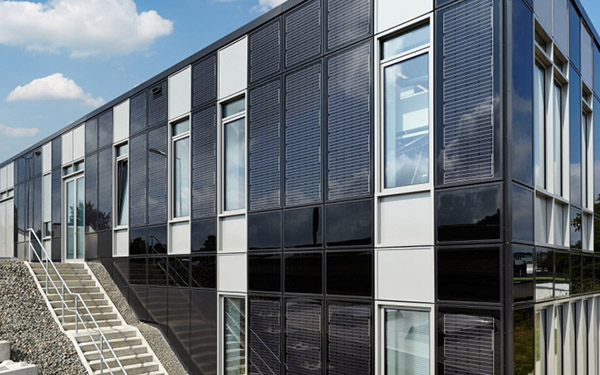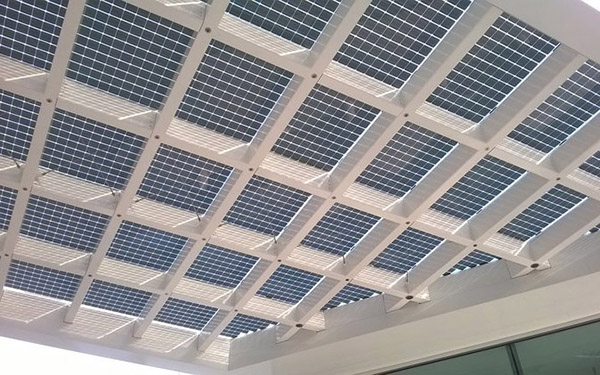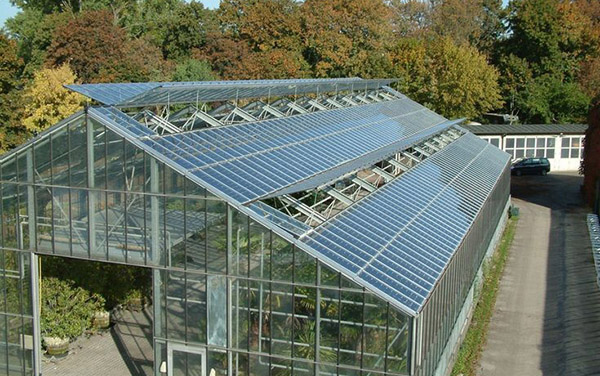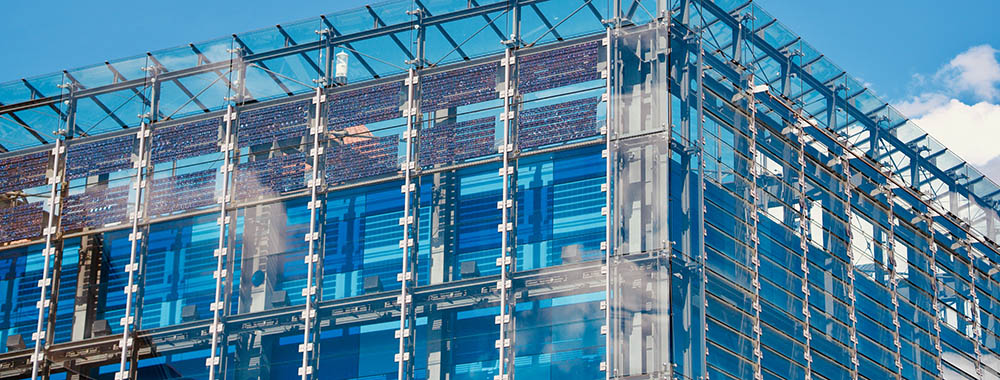What is BIPV?
Building-integrated photovoltaics (BIPV) are solar power generating products or systems that are seamlessly integrated into the building envelope and part of building components such as facades, roofs or windows. Serving a dual purpose, a BIPV system is an integral component of the building skin that simultaneously converts solar energy into electricity and provides building envelope functions such as:
- weather protection
- thermal insulation
- noise protection
- daylight illumination
- safety
|
Applications
1. Facade – PV can be integrated into the sides of buildings, replacing traditional glass windows with semi-transparent thin-film or crystalline solar panels. These surfaces have less access to direct sunlight than rooftop systems, but typically offer a larger available area. In retrofit applications, PV panels can also be used to camouflage unattractive or degraded building exteriors. |
 |
|
 |
2. Rooftops – In these applications, PV material replaces roofing material or, in some cases, the roof itself. Some companies offer an integrated, single-piece solar rooftop made with laminated glass; others offer solar “shingles” which can be mounted in place of regular roof shingles. | |
| 3. Glazing – Ultra-thin solar cells may be used to create semi-transparent surfaces, which allow daylight to penetrate while simultaneously generating electricity. These are often used to create PV skylights or greenhouses. |
|
|
Benefits of BIPV
The benefits of BIPV are manifold: BIPV not only produces on-site clean electricity without requiring additional land area, but can also impact the energy consumption of a building through daylight utilization and reduction of cooling loads. BIPV can therefore contribute to developing net-zero energy buildings. Turning roofs and façades into energy generating assets, BIPV is the only building material that has a return on investment (ROI). Furthermore, the diverse use of BIPV systems opens many opportunities for architects and building designers to enhance the visual appearance of buildings. Finally, yet importantly, building owners benefit from reduced electricity bills and the positive image of being recognized as "green" and "innovative".

